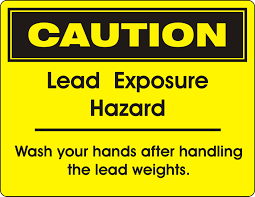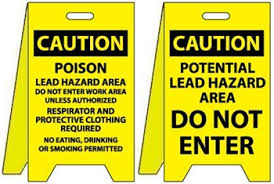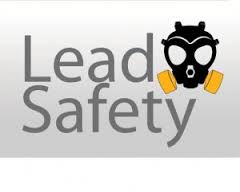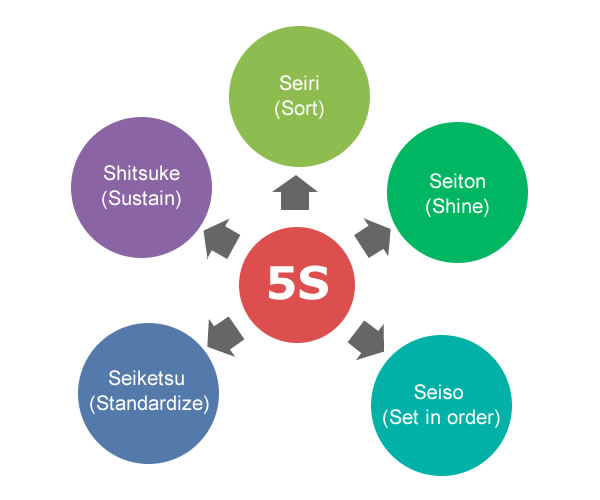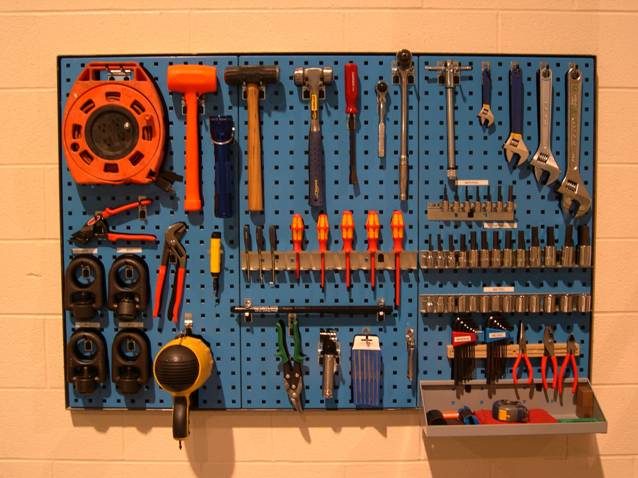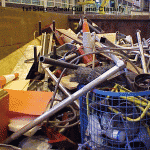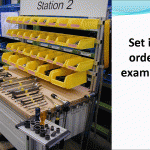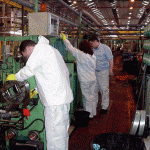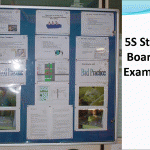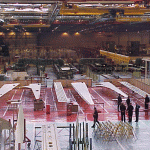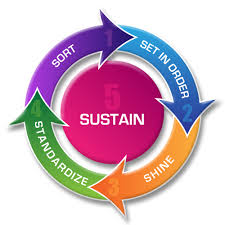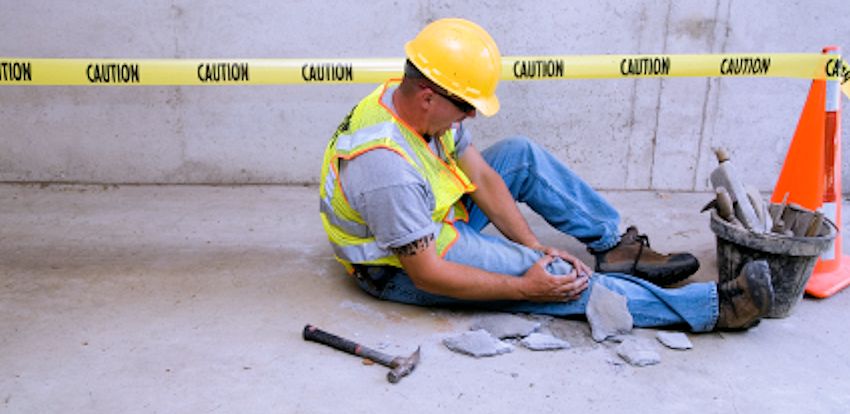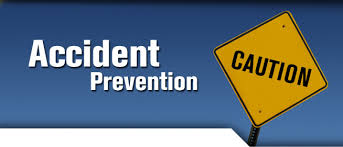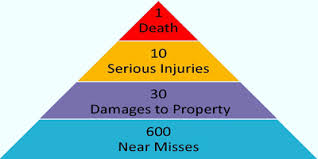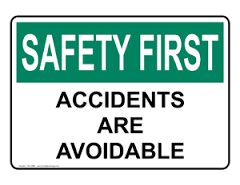3 Parts to Process Safety
Process Safety Management (PSM) meet the requirements of OSHA Standard Process Safety Management of Highly Hazardous Substances.
Process Safety Information is the technical information on the process and equipment in the system. This information allows for accurate analysis.
Process Hazard Analysis and maintaining information on the system for operator training and reference.
PSM Elements:
The PSM Standard contains14 Elements that must be addressed in this program.
1. Employee Participation .
2. Process Safety Information (PSI).
3. Process Hazard Analysis (PHA).
4. Operating Procedures.
5. Training .
6. Contractor Safety.
7. Pre-Startup Safety Review.
8. Mechanical Integrity.
9. Hot Work Program .
10. Management of Change (MOC) .
11. Incident Investigation
12. Emergency Planning and Response
13. Compliance Audits
14. Trade Secrets
Section 1: Employee Participation
Requirements: The standard requires employers to:
• Develop a Plan of Action for implementation of Employee Involvement
• Consult with employees on the conduct of the development of PSM Elements
• Provide access to PSM information
Section 2: Process Safety Information (PSI)
Requirements: the OSHA standard requires compiling of technical information on the process and equipment in the (Type in the PROCESS COVERED IN THIS PROGRAM) system. This requirement is to allow for PHA and maintaining information on the system for Operator training and reference.
Specifically:
• Hazards of (type in the Chemical covered in this program) pertaining to the technology of the (Type in the PROCESS COVERED IN THIS PROGRAM) system
• Information pertaining to the equipment in the process
• Documentation that equipment complies with recognized and generally accepted good engineering practices.
Section 3: Process Hazard Analysis:
Requirements: An initial process hazard analysis must be conducted by a team with expertise in engineering and process operations, including at least one employee who has experience and knowledge on the (Type in the PROCESS COVERED IN THIS PROGRAM) system. Completion date for PHA was May 26, 1997.
After Initial PHA:
• Establish a system to promptly address the team’s findings and recommendations .
• Assure that the recommendations are resolved in a timely manner .
• Document resolutions.
• Document what actions are to be taken .
• Complete actions as soon as possible.
• Develop a written schedule of when these actions are to be completed; Communicate the actions to operating, maintenance PHA review is required at least every five (5) to updated and revalidate by a qualified to assure that the process hazard analysis is consistent with the current process.
PHA must address: The hazards of the process;Identify previous incident which had a likely potential for catastrophic consequences in the workplace.
• Engineering and administrative controls.
• Detection methods for providing early warning of releases.
• Consequences of failure of engineering and administrative controls.
• Facility site.
• Human factors.
• Qualitative evaluation of a range of the possible safety and health effects of failure of controls on employees
Section 4: Operating Procedures:
Requirements: Develop and implement written operating procedures that provide clear instructions for safely conducting operations and maintenance. Operating procedures shall be readily accessible to employees. The operating procedures shall be reviewed as often as necessary to assure that they reflect current operating practice. The employer shall certify annually that these operating procedures are current and accurate.Develop and implement safe work practices to provide for the control of hazards during operations such as lockout/tagout; confined space entry; opening process equipment or piping; and control over entrance into a facility by maintenance, contractor, laboratory, or other support personnel. These safe work practices shall apply to employees and contractor employees.
Procedures shall include:
• Initial startup
• Normal, temporary and emergency operations
• Normal shutdown
• Startup following a turnaround or after an emergency shutdown
• Operating limits
• Consequences of deviation & Steps required to correct or avoid deviation.
• Safety and health considerations:
• Precautions necessary to prevent exposure, including engineering controls
• Administrative controls, and personal protective equipment
• Control measures to be taken if physical contact or airborne exposure occurs
• Quality control for raw materials and control of hazardous chemical inventory levels
• Safety systems and their functions.
Section 5: Training
Initial training: Each operator must be trained in an overview of the process and in the operating procedures. The training shall include emphasis on the specific safety and health hazards, emergency operations including shutdown, and safe work practices applicable to the employee’s job tasks. For those employees already involved in operating a process on May 26, 1992, an employer may certify in writing that the employee has the required knowledge, skills, and abilities to safely carry out the duties and responsibilities as specified in the operating procedures.
Refresher training shall be provided at least every three years, and more often if necessary, to each employee involved in operating a process to assure that the employee understands and adheres to the current operating procedures of the process. The employer, in consultation with the employees involved in operating the process, shall determine the appropriate frequency of refresher training.
Training documentation. The employer shall ascertain that each employee involved in operating a process has received and understood the training required by this paragraph. The employer shall prepare a record that contains the identity of the employee, the date of training, and the means used to verify that the employee understood the training.
Section 6: Contractors
Requirements
• Obtain and evaluate information regarding the contract employer’s safety performance and programs.
• contract employers of the known potential fire, explosion, or toxic release hazards related to the contractor’s work and the process to contract employers the applicable provisions of the emergency action plan.
• Develop and implement safe work practices to control the entrance, presence and exit of contract personnel.
• evaluate the performance of contract employers in fulfilling their obligations.
• a contract employee injury and illness log related to the contractor’s work in process areas
Section 7: Pre-Startup Safety Review
Requirements: Perform a pre-startup safety review for new facilities and for modified facilities when the modification is significant enough to require a change in the process safety information. The purpose of the Pre-Startup Review is to confirm that, prior to the introduction of highly hazardous chemicals to a process:
• Construction and equipment is in accordance with design specifications;
• Safety, operating, maintenance, and emergency procedures are in place and are adequate
• Modified facilities meet the requirements contained in Management of Change
• Training of each employee involved in operating a process has been completed.
Section 8: Mechanical Integrity
Requirements: Establish and implement written procedures to maintain the on-going integrity of (Type in the PROCESS COVERED IN THIS PROGRAM) equipment.
This includes: Test & Inspections (T&Is) on equipment following recognized and generally accepted good engineering practices, manufacturers recommendations and operating experience for the conduct and frequency.
Documentation of T&Is, identifying:
• date
• name of the person performing T&I
• serial number or other identifier of the
• description of the inspection or test performed
• results
Equipment deficiencies. Correct deficiencies in equipment that are outside acceptable limits before further use or in a safe and timely manner when necessary means are taken to assure safe operation.
New Equipment. Assure that equipment as it is fabricated is suitable for the process application for which they will be used. Additionally, conduct appropriate checks and inspections to assure that equipment is installed properly and consistent with design specifications and the manufacturer’s instructions.
Material Control. Assure that maintenance materials, spare parts and equipment are suitable for the process application for which they will be used.
Section 9: Hot Work
Requirements: The employer shall issue a hot work permit for hot work operations conducted on or near a covered process. The permit shall document that the fire prevention and protection requirements in 29 CFR 1910.252(a) have been implemented prior to beginning the hot work operations; it shall indicate the date(s) authorized for hot work; and identify the object on which hot work is to be performed. The permit shall be kept on file until completion of the hot work operations.
Section 10: Management of Change (MOC)
Requirements: Establish and implement written procedures to manage changes (except for “replacements in kind”) to process chemicals, technology, equipment, and procedures; and, changes to facilities that affect a covered process.Prior to the change, address the following considerations:
• The technical basis for the proposed change;
• Impact of change on safety and health;
• Modifications to operating procedures;
• Necessary time period for the change; and,
• Authorization requirements for the proposed change.Train affected employees and contract employees in the change prior to start-up of the process or affected part of the process.Up-date PSI, PHA and Operating Procedures
Section 11: Incident Investigation
Requirements:
Investigate each incident that resulted in, or could reasonably have resulted in a catastrophic release of highly hazardous chemical in the workplace. An incident investigation shall be initiated as promptly as possible, but not later than 48 hours following the incident.
Establish an incident investigation team which consists of at least one person knowledgeable in the process involved, including a contract employee if the incident involved work of the contractor, and other persons with appropriate knowledge and experience to thoroughly investigate and analyze the incident.
Incident Reports: A report shall be prepared at the conclusion of the investigation that includes at a minimum:
• Date of incident
• Date investigation began
• Description of the incident
• Factors that contributed to the incident
• Recommendations resulting from the investigation.
Corrective Actions: Establish a system to promptly address and resolve the incident report findings and recommendations. Resolutions and corrective actions shall be documented.
Report Review: The report shall be reviewed with all affected personnel whose job tasks are relevant to the incident findings including contract employees where applicable. Incident investigation reports shall be retained for five years
Section 12: Emergency Planning & Response
Requirements:
Establish and implement an emergency action plan for the entire plant in accordance with the provisions of 29 CFR 1910.38(a). and 29 CFR 1910.120(a), (p) and (q). In addition, the emergency action plan shall include procedures for handling small releases.
Section 13: Compliance Audits
Requirements: Certify compliance with the provisions of the PSM Standard at least every three years to verify that the procedures and practices developed under the standard are adequate and are being followed.
• The compliance audit shall be conducted by at least one person knowledgeable in the process.
• A report of the findings of the audit shall be developed.
• Promptly determine and document an appropriate response to each of the findings of the compliance audit, and document that deficiencies have been corrected.
• Retain the two (2) most recent compliance audit reports.
Section 14: Trade Secrets
Requirements: Make all information necessary to comply with the section available to those persons responsible for compiling the process safety information, those assisting in the development of the process hazard analysis, those responsible for developing the operating procedures, and those involved in incident investigations, emergency planning and response and compliance audits without regard to possible trade secret status of such information. There is no restriction in the OSHA Standard 1910.119 which prevents the company from requiring any persons to whom the information is made available to enter into confidentiality agreements not to disclose the information. Rules and procedures set forth in OSHA Standard 1910.1200, employees and their designated representatives shall have access to trade secret information contained within the process hazard analysis and other documents required to be developed by this standard.
PSM Elements:
Specified minimum elements that the OSHA standard requires employers to do:
1. Develop and maintain written safety information identifying workplace chemical and process hazards, equipment used in the processes, and technology used in the processes;
2. Perform a workplace hazard assessment, including, as appropriate, identification of potential sources of accidental releases, identification of any previous release within the facility that had a potential for catastrophic consequences in the workplace, estimation of workplace effects of a range of releases, and estimation of the health and safety effects of such a range on employees;
3. Consult with employees and their representatives on the development and conduct of hazard assessments and the development of chemical accident prevention plans and provide access to these and other records required under the standard;
4. Establish a system to respond to the workplace hazard assessment findings, which shall address prevention, mitigation, and emergency responses;
5. Review periodically the workplace hazard assessment and response system;
6. Develop and implement written operating procedures for the chemical processes, including procedures for each operating phase, operating limitations, and safety and health considerations;
7. Provide written safety and operating information for employees and employee training in operating procedures, by emphasizing hazards and safe practices that must be developed and made available; 8. Ensure contractors and contract employees are provided with appropriate information and training;
9. Train and educate employees and contractors in emergency response procedures in a manner as comprehensive and effective as that required by the regulation promulgated pursuant to section 126(d) of the Superfund Amendments and Reauthorization Act;
10. Establish a quality assurance program to ensure that initial process-related equipment, maintenance materials, and spare parts are fabricated and installed consistent with design specifications;
11. Establish maintenance systems for critical process-related equipment, including written procedures, employee training, appropriate inspections, and testing of such equipment to ensure ongoing mechanical integrity;
12. Conduct pre-startup safety reviews of all newly installed or modified equipment;
13. Establish and implement written procedures managing change to process chemicals, technology, equipment and facilities, and
14. Investigate every incident that results in or could have resulted in a major accident in the workplace, with any findings to be reviewed by operating personnel and modifications made, if appropriate.
PROCESS SAFETY INFORMATION:
Employers must complete a compilation of written process safety information before conducting any process hazard analysis required by the standard. The compilation of written process safety information, completed under the same schedule required for process hazard analyses, will help the employer and the employees involved in operating the process to identify and understand the hazards posed by those processes involving highly hazardous chemicals. Process safety information must include information on the hazards of the highly hazardous chemicals used or produced by the process, information on the technology of the process, and information on the equipment in the process. Information on the hazards of the highly hazardous chemicals in the process shall consist of at least the following:
• Toxicity,
• Permissible exposure limits,
• Physical data,
• Reactivity data,
• Corrosivity data, and
• Thermal and chemical stability data, and hazardous effects of inadvertent mixing of different materials. Information on the technology of the process must include at least the following:
• A block flow diagram or simplified process flow diagram,
• Process chemistry,
• Maximum intended inventory,
• Safe upper and lower limits for such items as temperatures, pressures, flows or compositions, and • An evaluation of the consequences of deviations, including those affecting the safety and health of employees. Where the original technical information no longer exists, such information may be developed in conjunction with the process hazard analysis in sufficient detail to support the analysis. Information on the equipment in the process must include the following:
• Materials of construction,
• Piping and instrument diagrams (P&lDs),
• Electrical classification,
• Relief system design and design basis,
• Ventilation system design,
• Design codes and standards employed,
• Material and energy balances for processes built after May 26, 1992, and
• Safety systems (e.g., interlocks, detection or suppression systems) .
The employer shall document that equipment complies with recognized and generally accepted good engineering practices. For existing equipment designed and constructed in accordance with codes, standards, or practices that are no longer in general use, the employer shall determine and document that the equipment is designed, maintained, inspected, tested, and operated in a safe manner. The compilation of the above described process safety information provides the basis for identifying and understanding the hazards of a process and is necessary in developing the process hazard analysis and may be necessary for complying with other provisions of PSM such as management of change and incident investigations.
PROCESS HAZARD ANALYSIS:
The process hazard analysis is a thorough, orderly, systematic approach for identifying, evaluating, and controlling the hazards of processes involving highly hazardous chemicals. The employer must perform an initial process hazard analysis (hazard evaluation) on all processes covered by this standard. The process hazard analysis methodology selected must be appropriate to the complexity of the process and must identify, evaluate, and control the hazards involved in the process. First, employers must determine and document the priority order for conducting process hazard analyses based on a rationale that includes such considerations as the extent of the process hazards, the number of potentially affected employees, the age of the process, and the operating history of the process. All process hazard analyses must be updated and revalidated, based on their completion date, at least every 5 years. The employer must use one or more of the following methods, as appropriate, to determine and evaluate the hazards of the process being analyzed:
• What-if,
• Checklist,
• What-lf/checklist,
• Hazard and operability study (HAZOP),
• Failure mode and effects analysis (FMEA),
• Fault tree analysis, or
• An appropriate equivalent methodology. Whichever method(s) are used, the process hazard analysis must address the following:
• The hazards of the process;
• The identification of any previous incident that had a potential for catastrophic consequences in the workplace;
• Engineering and administrative controls applicable to the hazards and their interrelationships, such as appropriate application of detection methodologies to provide early warning of releases. Acceptable detection methods might include process monitoring and control instrumentation with alarms, and detection hardware such as hydrocarbon sensors;
• Consequences of failure of engineering and administrative controls;
• Facility siting;
•Human factors; and
• A qualitative evaluation of a range of the possible safety and health effects on employees in the workplace if there is a failure of controls.
OSHA believes that the process hazard analysis is best performed by a team with expertise in engineering and process operations, and that the team should include at least one employee who has experience with and knowledge of the process being evaluated. Also, one member of the team must be knowledgeable in the specific analysis methods being used.
The employer must establish a system to address promptly the team’s findings and recommendations; ensure that the recommendations are resolved in a timely manner and that the resolutions are documented; document what actions are to be taken; develop a written schedule of when these actions are to be completed; complete actions as soon as possible; and communicate the actions to operating, maintenance, and other employees whose work assignments are in the process and who may be affected by the recommendations or actions.
At least every 5 years after the completion of the initial process hazard analysis, the process hazard analysis must be updated and revalidated by a team meeting the standard’s requirements to ensure that the hazard analysis is consistent with the current process.
Employers must keep on file and make available to OSHA, on request, process hazard analyses and updates or revalidation for each process covered by PSM, as well as the documented resolution of recommendations, for the life of the process.
OPERATING PROCEDURES
The employer must develop and implement written operating procedures, consistent with the process safety information, that provide clear instructions for safely conducting activities involved in each covered process. OSHA believes that tasks and procedures related to the covered process must be appropriate, clear, consistent, and most importantly, well communicated to employees. The procedures must address at least the following elements: Steps for each operating phase:
• Initial startup;
• Normal operations;
• Temporary operations;
• Emergency shutdown, including the conditions under which emergency shutdown is required, and the assignment of shutdown responsibility to qualified operators to ensure that emergency shutdown is executed in a safe and timely manner;
• Emergency operations;
• Normal shutdown; and
• Startup following a turnaround, or after an emergency shutdown. Operating limits:
• Consequences of deviation, and
• Steps required to correct or avoid deviation. Safety and health considerations:
• Properties of, and hazards presented by, the chemicals used in the process;
• Precautions necessary to prevent exposure, including engineering controls, administrative controls, and personal protective equipment;
• Control measures to be taken if physical contact or airborne exposure occurs;
• Quality control for raw materials and control of hazardous chemical inventory levels; and
• Any special or unique hazards.
• Safety systems (e.g., interlocks, detection or suppression systems) and their functions.
To ensure that a ready and up-to-date reference is available, and to form a foundation for needed employee training, operating procedures must be readily accessible to employees who work in or maintain a process. The operating procedures must be reviewed as often as necessary to ensure that they reflect current operating practices, including changes in process chemicals, technology, and equipment, and facilities.
To guard against outdated or inaccurate operating procedures, the employer must certify annually that these operating procedures are current and accurate. The employer must develop and implement safe work practices to provide for the control of hazards during work activities such as lockout/tagout; confined space entry; opening process equipment or piping; and control over entrance into a facility by maintenance, contractor, laboratory, or other support personnel.
These safe work practices must apply both to employees and to contractor employees.

![]()
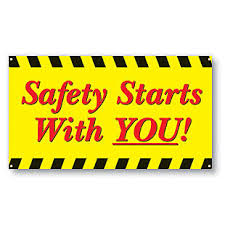
![]() OSHA Recordable Incident Rate (IR)
OSHA Recordable Incident Rate (IR)Number of Lost Time Cases x 200,000
Total Number of DART incidents x 200,000
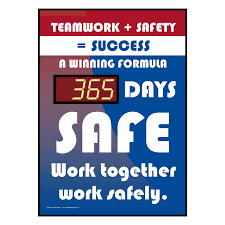
![]()
![]()
![]()

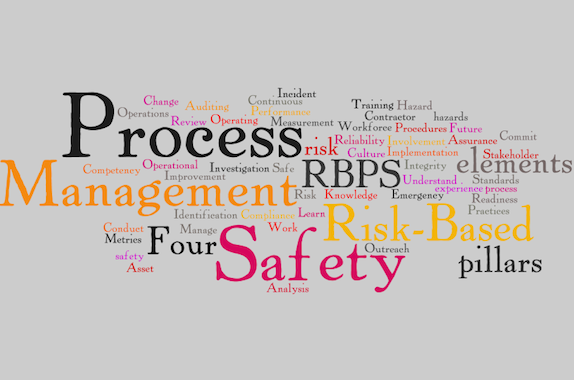
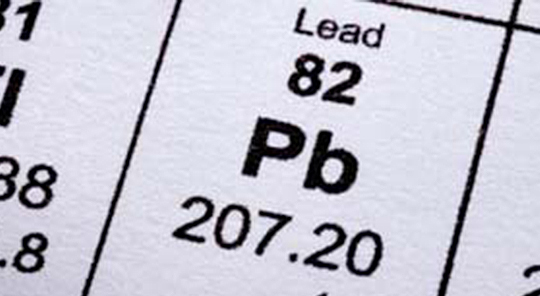
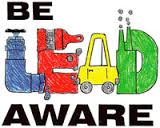
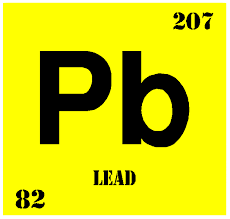
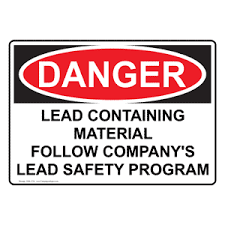
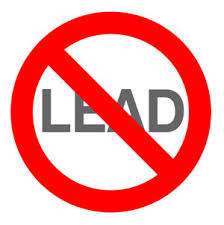

 engineering controls, administrative controls, work-practice controls, and, finally, personal protective equipment (PPE). Engineering controls include isolating the exposure source or using other engineering methods, such as local exhaust ventilation, to minimize exposure to lead. Administrative controls usually involve logistic or workforce actions such as limiting the amount of time a worker performs work involving potential exposure to lead. When exposure to lead hazards cannot be engineered completely out of normal operations or maintenance work, and when safe work practices and other forms of administrative controls cannot provide sufficient additional protection, a supplementary method of control is the use of protective clothing or equipment. This is collectively called personal protective equipment, or PPE. PPE may also be appropriate for controlling hazards while engineering and work practice controls are being installed. PPE includes wearing the proper respiratory protection and clothing. Good housekeeping practices to prevent surface contamination and hygiene facilities and practice to protect workers from ingesting and taking home lead are also necessary to prevent exposure to lead.
engineering controls, administrative controls, work-practice controls, and, finally, personal protective equipment (PPE). Engineering controls include isolating the exposure source or using other engineering methods, such as local exhaust ventilation, to minimize exposure to lead. Administrative controls usually involve logistic or workforce actions such as limiting the amount of time a worker performs work involving potential exposure to lead. When exposure to lead hazards cannot be engineered completely out of normal operations or maintenance work, and when safe work practices and other forms of administrative controls cannot provide sufficient additional protection, a supplementary method of control is the use of protective clothing or equipment. This is collectively called personal protective equipment, or PPE. PPE may also be appropriate for controlling hazards while engineering and work practice controls are being installed. PPE includes wearing the proper respiratory protection and clothing. Good housekeeping practices to prevent surface contamination and hygiene facilities and practice to protect workers from ingesting and taking home lead are also necessary to prevent exposure to lead.